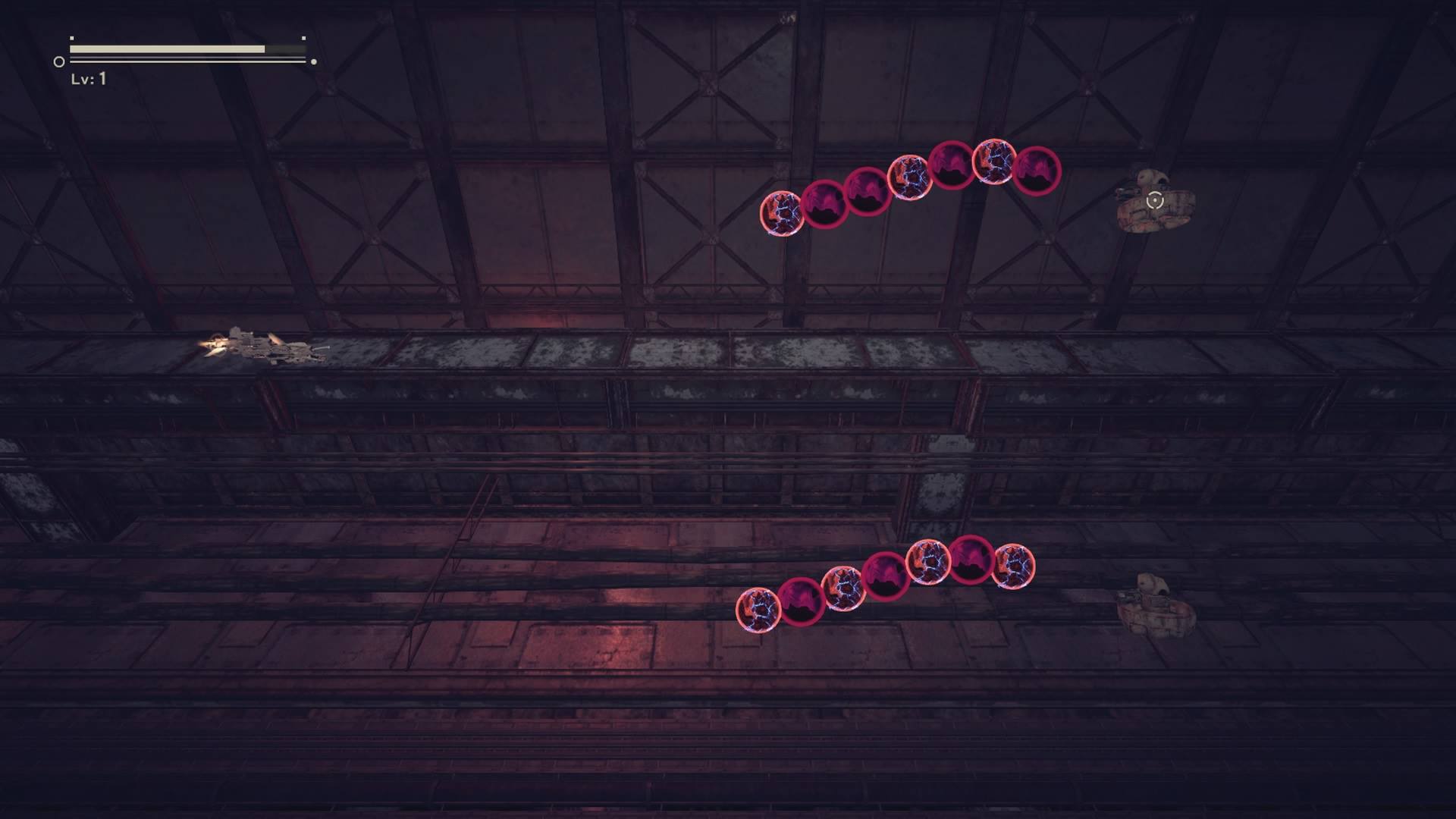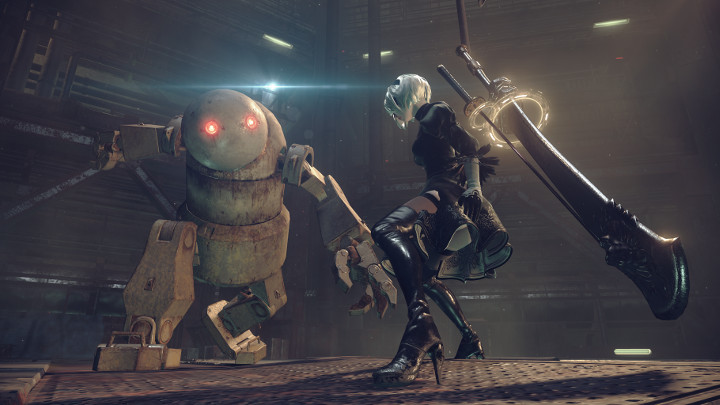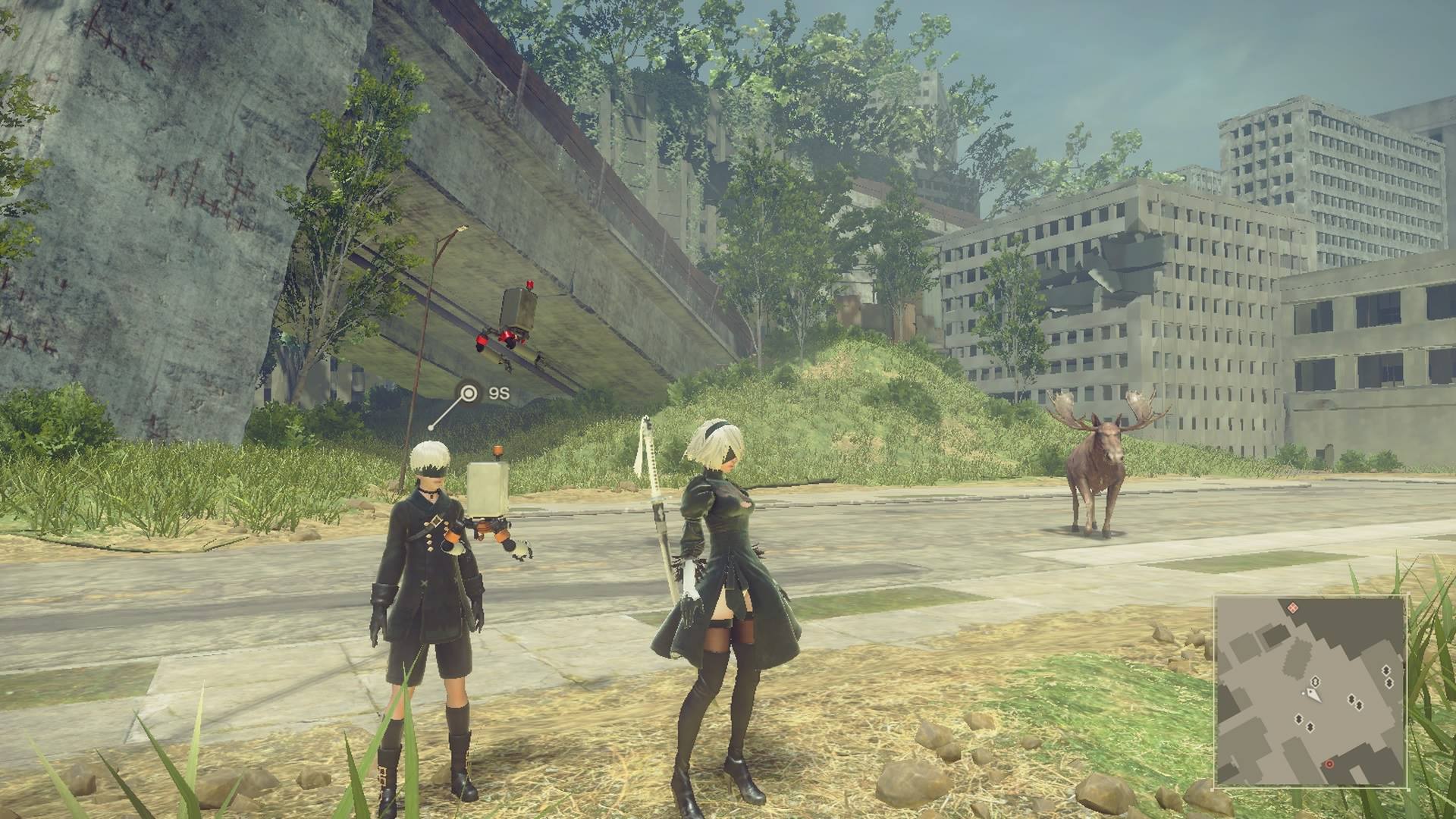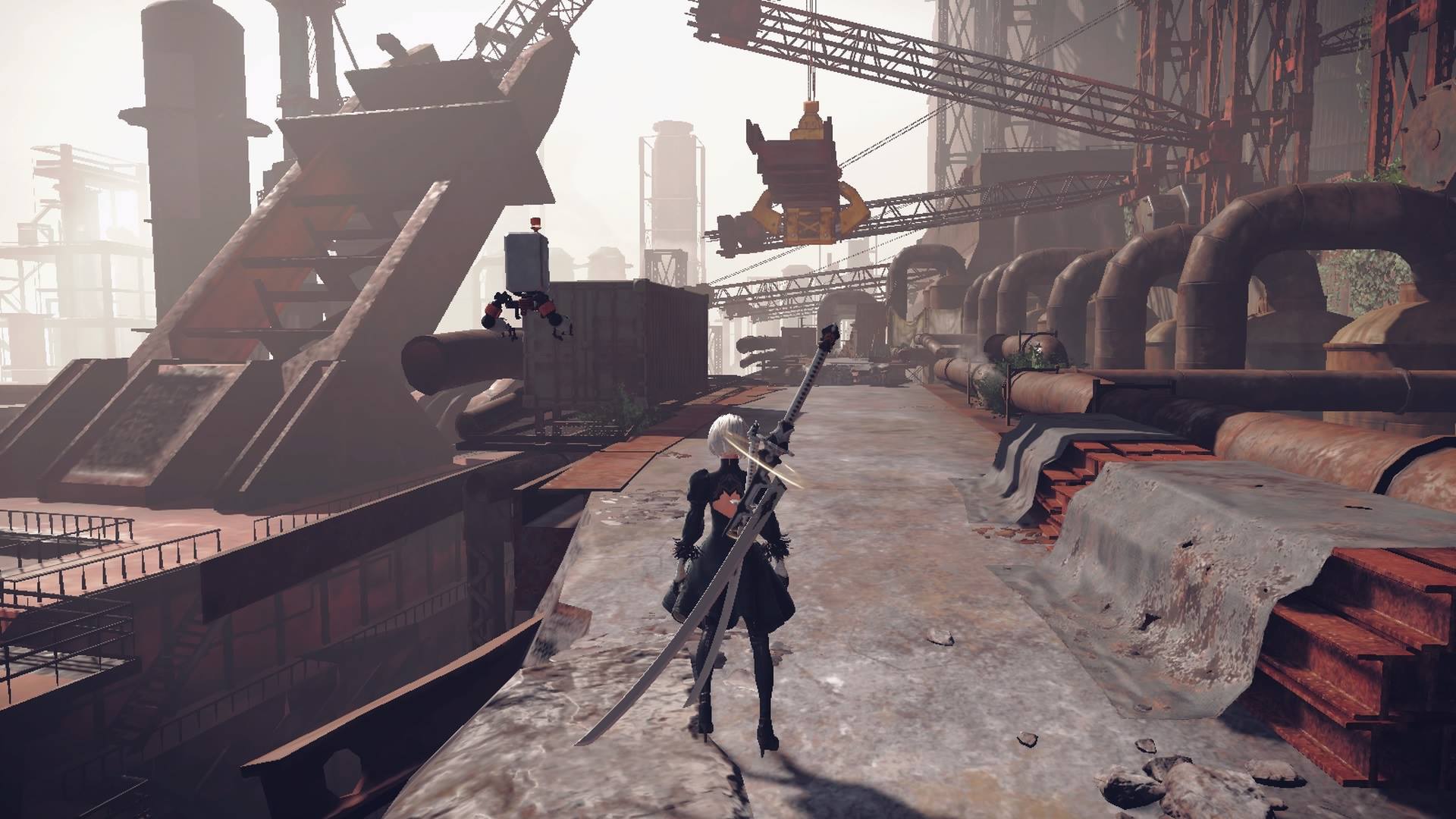What’s with the avalanche of surprisingly good games all arriving in a row this year? People need time to see their families and go to work, damn it! But go ahead and add Nier: Automata to the pile of must-play experiences on the PS4.
Although a spin-off from Drakengard and a sequel to the previous Nier, there’s surprisingly little connection between this game and its predecessors. While there are tie-ins here and there, on the whole Nier: Automata is its own animal altogether in terms of style, story, and gameplay.
Expect The Unexpected
it’s clear this development team and its director have a whole lot of love for gaming in general, and there are some interesting design choices you won’t see elsewhere. For instance, changing visual and audio settings is turned into a mini-game, and you actually have to buy various HUD elements throughout the game rather than getting them right all off the bat.
The android theme is also constantly in your face, with the screen going black and white like a bad video feed when main character 2B is low on health. Most unexpected is the opening mission, which in extremely rapid succession goes through seven or eight different genre styles.
 Wait, when did this become a side-scrolling shooter?
Wait, when did this become a side-scrolling shooter?
First this game is Space Invaders, then twin stick Geometry Wars, then side scrolling R-Type, then a platformer, then a God Of War hack ‘n slash, then top-down Contra, then Shadow Of The Colossus with gigantic boss battles, then a flying mech simulator, and then a text adventure — and that’s just the first level!
There’s no doubt that first mission is a wild ride (and a triumph of gaming), but is also has the downside of being super disorienting. In one particular instance when the camera switched to top-down out of nowhere I was totally lost in the bullet hell, having no idea where 2B was and no immediately clear way to distinguish enemy from projectile from pick-up, etc. For a frenzied few moments there I was just button mashing and hoping for the best.
 Since this is how the director goes out in public, maybe I should have expected something even more weird…
Since this is how the director goes out in public, maybe I should have expected something even more weird…
Fluid Combat
Thankfully, all this genre-hopping levels off considerably after the opening mission and sticks more towards one style in a large open-world setting that’s more like what the trailers and screenshots implied.
When you get into the heart of the game, there’s a fabulous take on melee and ranged combat, as you use a floating drone for bullet and laser attacks while controlling 2B herself for up close and at-range sword strikes. Frequently you have to use both combat methods at the same time, locking on and aiming at aerial targets with your drone while simultaneously taking on ground forces with melee attacks.
While not completely unique, the way this dual system is implemented is sort of a paradigm shift in how you view combat — and that really makes Nier: Automata a joy (and challenge) to play.
The game is very much focused on the action, but there’s still plenty of things to do on the side instead of killing adorably disturbing robots, like taking time out for fishing (or just gaping at the scenery of a destroyed Earth being reclaimed by nature).
Story and Endings
If you’re paying attention at all, you should be able to tell from the beginning that what the androids are being told clearly isn’t what’s actually going on between Earth and the moon’s orbital bases. From the start, 2B is showing signs of no longer wanting to be used for someone else’s war while chanting “for the glory of mankind!”
In terms of theme and tone, there are echoes of earlier sci-fi RPG mashup games like Xenosaga, as well as sci-fl movies like Oblivion — and oddly enough, perhaps even some nods to Wall-E.
Sadly, the characters aren’t particularly compelling. But I was constantly intrigued by what was going on, even if it is easy to guess at the truth from right after the first mission. There’s also a lot more to the story than what’s on the surface, and that has to be excavated through multiple playthroughs.
Going even further than the earlier Drakengard and Nier titles, this time around that’s a whopping 26 different endings, and you are expected to find most or even all of them. On each subsequent playthrough the game will change, both in story and battle tactics. So replayability isn’t just high; it’s actually built into the game design.
 What’s going on in that android head of yours?
What’s going on in that android head of yours?
The Bottom Line
Nier: Automata is constantly unconventional and unorthodox, and that’s overall quite a good thing that results in satisfying and fluid combat. There are a few downsides, like an upgrade menu screen and chip system that’s incomprehensibly packed together and overly complex at the beginning.
There’s also no auto-save feature, as finding additional save spots is built into the gameplay. That’s fine in some cases, but sort of annoying in others when you don’t want to track down a save spot to quit the game.
Between the top-notch combat and dozens of endings, Nier: Automata will keep you engaged in for a whole lot of hours, and if you dig Bayonetta, you’ll absolutely love the core gameplay on display here.
Note: Square Enix provided a copy of Nier to the writer for the purposes of this review.









Published: Mar 7, 2017 4:58 PM UTC